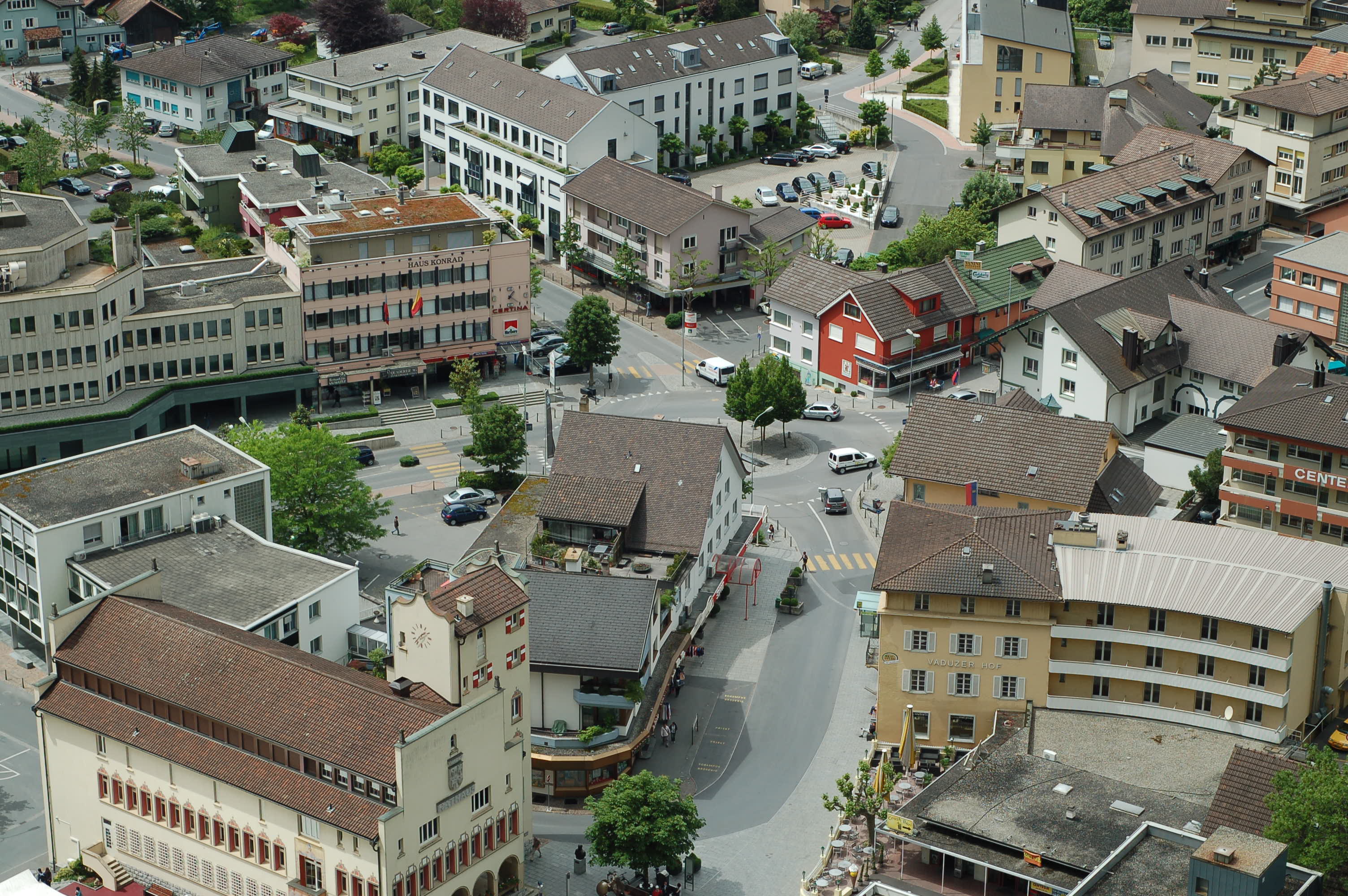Liechtenstein (
Liechtenstein is bordered by Switzerland to the west and south and Austria to the east and north. It has an area of just over 160 square kilometres (62 square miles) and an estimated population of 37,000. Divided into 11 municipalities, its capital is Vaduzand its largest town is Schaan.
Economically, Liechtenstein has the third highest gross domestic product per person in the world when adjusted by purchasing power parity, after Qatar and Luxembourg, and the highest when not adjusted by purchasing power parity. Theunemployment rate is one of the lowest in the world at 1.5%.
An alpine country, Liechtenstein is mainly mountainous, making it a winter sports destination. Many cultivated fields and small farms are found both in the south (Oberland, upper land) and north (Unterland, lower land). The country has a strong financial sector centered in Vaduz. Liechtenstein is a member of the European Free Trade Association, and while not being a member of the European Union, the country participates in both the Schengen Area and European Economic Area. It also has a customs union and a monetary union with Switzerland.
The oldest traces of hominid existence in Liechtenstein date back to the Middle Paleolithic era. Neolithic farming settlements were founded in the valleys around 5300 BC.
Hallstatt and La Tène cultures flourished during the late Iron Age from around 450 BC possibly under some influence from theGreek and Etruscan civilisations. One of the most important tribal groups in the Alpine region were the Helvetii. In 58 BC, at theBattle of Bibracte, Julius Caesar defeated the Alpine tribes, bringing the region under closer control of the Roman Empire. By 15 BC Tiberius, who was destined to be the second Roman emperor, and his brother Drusus conquered the entire Alpine area. Liechtenstein was integrated into the Roman province of Raetia. The area was maintained by the Roman military, which maintained a large legionary camp called Brigantium (Austria) near Lake Constance and at Magia (Swiss). A Roman road ran through the territory. In 259/60 Brigantium was destroyed by the Alemanni, a Germanic people who settled in the area in around 450.
In the Early Middle Ages, the Alemanni had settled the eastern Swiss plateau by the 5th century and the valleys of the Alps by the end of the 8th century. Liechtenstein formed part of eastern edge of Alemannia. The entire region became part of Frankish Empire in the 6th century following Clovis I's victory over the Alemanni at Tolbiac in 504.

Liechtenstein remained under Frankish hegemony (Merovingian and Carolingian dynasties) until the empire was divided by theTreaty of Verdun in 843 AD following the death of Charlemagne. The territory of present-day Liechtenstein belonged to East Francia until it was reunified with Middle Francia under the Holy Roman Empire around 1000 AD.
Nenhum comentário:
Postar um comentário